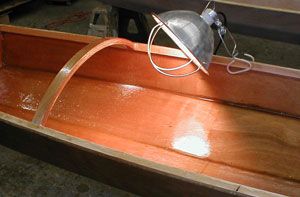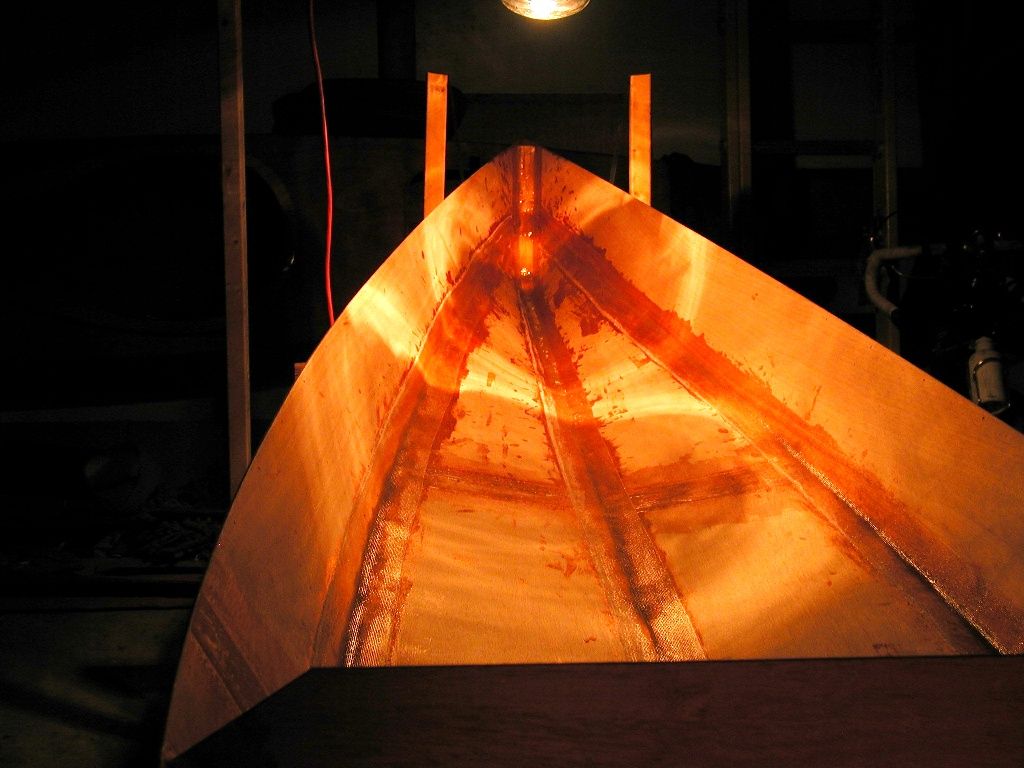STEP FOUR: PROPER CURING
Allow the lay-up to cure for a minimum of 24 to 36 hours before handling.Optimum cured properties can take up to 7 days depending on the ambient cure condition. The ideal temperature cure condition of most room temperature epoxy resin is 22 to 27 degrees Celsius at 20% relative humidity. Higher ambient curing temperatures will promote faster polymerization and development of cured mechanical properties.
Improving mechanical performance via post heat cure
In general room temperature cured epoxy resin has a maximum operating temperature of 160°F or lower.
A short heat post cure will ensure that the mixed epoxy system is fully cured,especially for room temperature cured system that can take up to 7 days to achieve 100% cure. Some darkening or yellowing may occur if overexposed to high temperature (>250 F).
Amine Blush
Although we have formulated the MAX CLR, MAX BOND and MAX GPE product line to be resistant to amine-blush, it is recommended not to mix any resin systems in high humidity conditions (greater than 60%). Always make sure that the substrate or material the epoxy resin system is being applied to is as dry as possible to insure the best cured performance.
Other Types of Epoxy Resin Curing Mechanisms
Latent Curing Systems
UV Curing Systems
Similar to “addition cure” or catalytic polymerization, Ultraviolet Curing is another method that has gained popular use in the polymer adhesives and coatings application. It offers a unique curing mechanism that converts a liquid polymer into a solid plastic upon exposure to UV radiation. The two common commercially significant method are “FREE RADICAL INITIATION” and CATIONIC REACTION. In both reaction polymerization occurs via decomposition of a Photoiniator blended within the resin system; upon exposure to adequate wavelength of Ultraviolet energy the photoinitator degrades and cause a ring opening or cleavage of the photoinitiator molecule and induces rapid polymerization or cross linking.
The polymerization reaction can be either free radical or cationic and occurs almost instantaneous creation of a polymer network.
Heat Activated Curing Systems
This type of epoxy system will not polymerized unless it is exposed to the activation temperature of the curing agent which can be as low as 200F and as high as 400F. In most instances our MAX EPOXY SYSTEMS epoxy system can be stored at room temperature and remain liquid for up to six months and longer.
If a process oven is not available, an infared heat lamp can be used for larger parts.
POSSIBLE HEAT CURING TECHNIQUES
If an oven is not available to provide the needed thermal post cure, exposing the assemble part to direct solar heat(sun exposure) for a period will provide enough heat cure for the part to be handled. Other heat curing such as infrared heat lamps can be used if a heat chamber or oven is not available.


<<<Return to Composite Fabricating Basics Step 3: Proper Layup Technique